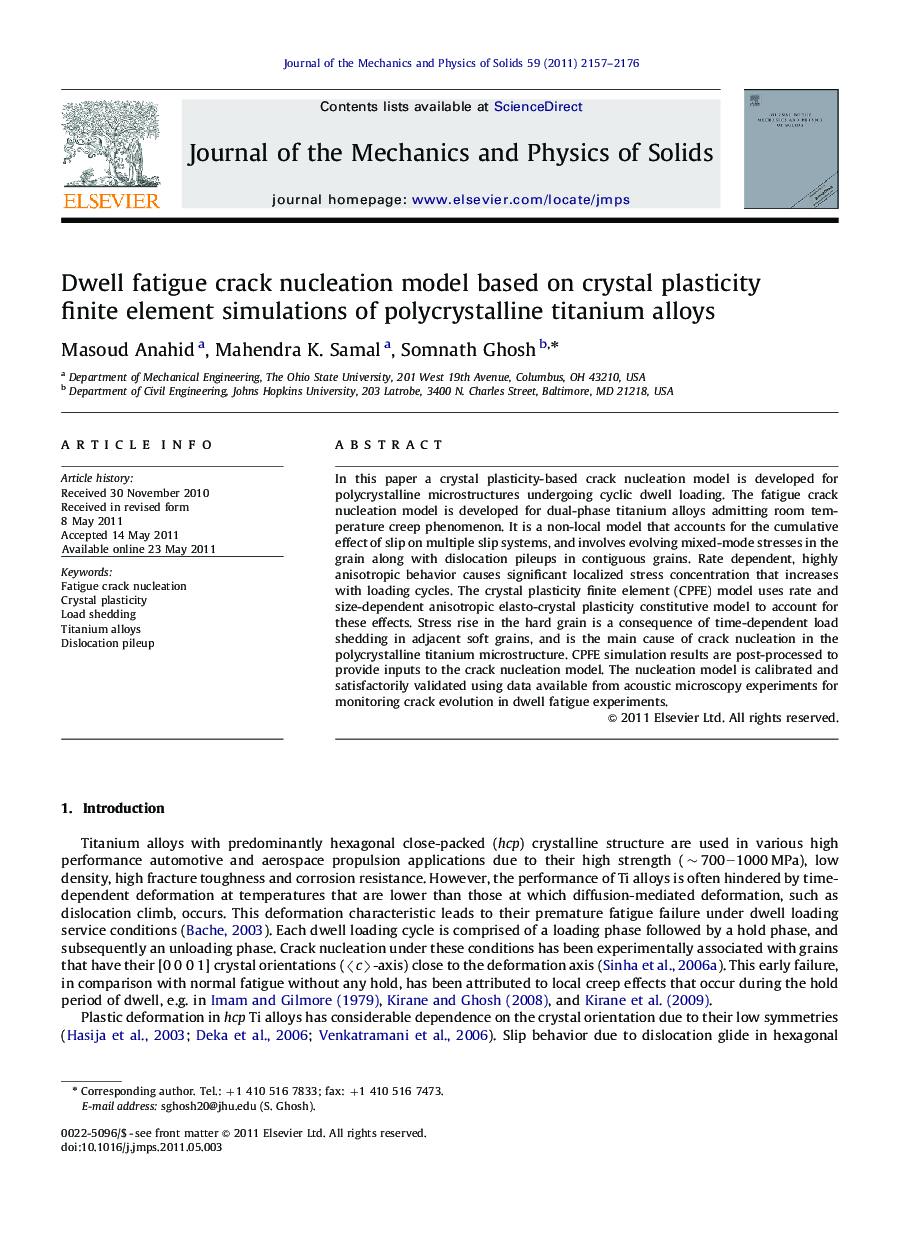| Article ID | Journal | Published Year | Pages | File Type |
|---|---|---|---|---|
| 793287 | Journal of the Mechanics and Physics of Solids | 2011 | 20 Pages |
In this paper a crystal plasticity-based crack nucleation model is developed for polycrystalline microstructures undergoing cyclic dwell loading. The fatigue crack nucleation model is developed for dual-phase titanium alloys admitting room temperature creep phenomenon. It is a non-local model that accounts for the cumulative effect of slip on multiple slip systems, and involves evolving mixed-mode stresses in the grain along with dislocation pileups in contiguous grains. Rate dependent, highly anisotropic behavior causes significant localized stress concentration that increases with loading cycles. The crystal plasticity finite element (CPFE) model uses rate and size-dependent anisotropic elasto-crystal plasticity constitutive model to account for these effects. Stress rise in the hard grain is a consequence of time-dependent load shedding in adjacent soft grains, and is the main cause of crack nucleation in the polycrystalline titanium microstructure. CPFE simulation results are post-processed to provide inputs to the crack nucleation model. The nucleation model is calibrated and satisfactorily validated using data available from acoustic microscopy experiments for monitoring crack evolution in dwell fatigue experiments.
